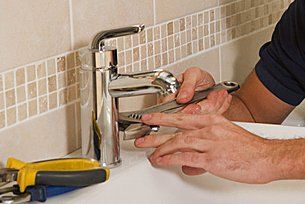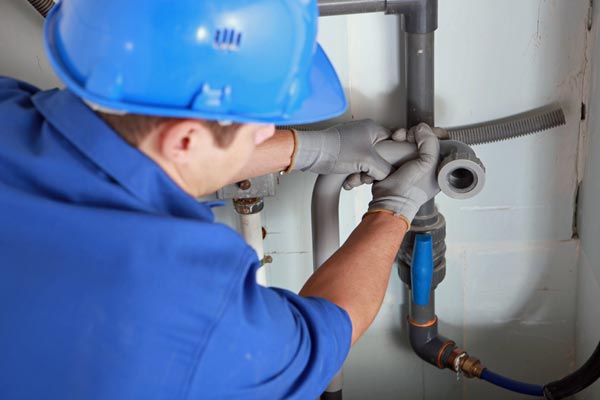Revealing the Next Chapter of Plumbing: Patterns and Innovations
Revealing the Next Chapter of Plumbing: Patterns and Innovations
Blog Article
Are you currently trying to locate insight concerning The Future of Plumbing: Trends and Innovations to Watch?

Introduction
The plumbing market is undertaking a transformative stage driven by technical improvements and expanding problems for sustainability and efficiency. This article explores emerging patterns and advancements shaping the future of pipes.
Smart Pipes Solutions
Including smart technology into plumbing systems makes it possible for remote surveillance, leakage discovery, and automated maintenance. Smart sensing units and IoT (Web of Things) tools enable homeowners and plumbing technicians to keep an eye on water usage and identify issues in real-time, bring about a lot more effective resource management and proactive maintenance.
Water Effectiveness Solutions
With raising emphasis on water conservation, cutting-edge solutions are being developed to minimize water waste in plumbing systems. High-efficiency fixtures, greywater recycling systems, and wise watering controllers are amongst the modern technologies assisting customers decrease their water footprint while keeping comfort and convenience.
Sustainable Materials
The shift in the direction of sustainability encompasses pipes materials, with an expanding choice for environmentally friendly options. Naturally degradable piping products, such as PEX (cross-linked polyethylene) and HDPE (high-density polyethylene), deal longevity and resistance to deterioration without endangering ecological honesty.
Anticipating Maintenance
Anticipating upkeep techniques leverage information analytics and artificial intelligence formulas to prepare for and protect against plumbing problems before they happen. By analyzing historic data and efficiency metrics, anticipating maintenance algorithms can recognize patterns and abnormalities, allowing positive treatments to prevent pricey repairs and disruptions.
Enhanced Truth in Pipes
Increased Reality (AR) technology is revolutionizing plumbing by offering specialists with real-time aesthetic advice for troubleshooting and repair service jobs. AR-enabled smart glasses or mobile applications overlay digital info onto the physical atmosphere, assisting plumbers envision pipeline formats, identify concealed leaks, and perform repair services with precision.
Impact of 3D Printing
The introduction of 3D printing has actually presented new possibilities in making pipes parts. From custom-made fixtures to elaborate pipeline installations, 3D printing enables rapid prototyping and on-demand manufacturing, reducing lead times and allowing better customization in plumbing layout.
Health And Wellness Characteristics
In feedback to heightened problems for health and safety, pipes fixtures are incorporating functions such as antimicrobial surface areas, touchless operation, and self-cleaning systems. These advancements not just enhance hygiene yet additionally promote individual comfort and convenience.
Hygiene-focused Components
Touchless faucets, self-sanitizing bathrooms, and antimicrobial surfaces are ending up being significantly common in property and commercial settings, lessening the danger of bacterium transmission and advertising a cleaner, healthier environment.
Water Top Quality Surveillance
Innovations in water quality monitoring innovations enable home owners to keep an eye on the purity and safety and security of their water supply in real-time. Smart water top quality sensors can spot impurities, pH levels, and temperature variants, empowering customers to take proactive actions to guarantee water safety and security.
Remote Plumbing Solutions
Remote diagnostics and virtual support are revolutionizing the method pipes solutions are provided. Via video conferencing and remote gain access to modern technologies, plumbings can fix concerns, provide guidance for DIY repair services, and also execute remote inspections, offering greater ease of access and benefit to property owners.
Difficulties and Opportunities
While plumbing developments hold immense promise, they additionally present difficulties such as information privacy worries, governing conformity, and the need for labor force training. Dealing with these obstacles calls for collaboration between industry stakeholders and governing bodies to make certain risk-free and responsible execution of new modern technologies.
Regulatory Landscape
Governing structures play a critical role in shaping the adoption of plumbing developments, with requirements and codes regulating every little thing from water performance to product safety. As technologies remain to develop, regulative bodies should adjust to make sure customer defense and environmental stewardship.
Future Outlook
The future of plumbing is characterized by proceeded technology and assimilation with other markets such as IoT, renewable resource, and structure automation. By accepting sustainable practices, leveraging arising modern technologies, and focusing on user-centric style, the pipes industry is poised to resolve the progressing demands of society while reducing its ecological footprint.
Conclusion
In conclusion, the future of pipes is defined by a merging of innovation, sustainability, and user-centric design. By embracing smart solutions, sustainable materials, and proactive maintenance methods, the plumbing market can improve effectiveness, promote safety and security, and contribute to a more sustainable future.
The Future of Plumbing: Trends and Innovations to Watch
Introduction to Future Plumbing Trends
The future of plumbing is being shaped by several key factors, including technological advancements, environmental concerns, and changing consumer expectations. These factors are driving the development of new products, services, and practices that enhance the efficiency, sustainability, and convenience of plumbing systems.
Key Trends and Innovations in Plumbing
Smart Plumbing Systems: The integration of smart technology into plumbing systems is transforming the way we manage water usage and detect issues. Smart leak detectors, automated water shut-off valves, and smart faucets are just a few examples of how technology is enhancing plumbing systems. These devices provide real-time data and remote control capabilities, allowing homeowners to monitor and manage their water usage more effectively. Water Conservation and Efficiency: With increasing concerns about water scarcity, there is a growing emphasis on water conservation and efficiency. Innovations such as low-flow fixtures, greywater recycling systems, and rainwater harvesting are becoming more popular. Plumbers are adopting these technologies to help customers reduce their water consumption and save on utility bills. Sustainable Materials: The use of sustainable materials in plumbing systems is gaining traction. This includes the adoption of recyclable and biodegradable materials, as well as the use of non-toxic and eco-friendly products. Sustainable materials help reduce the environmental impact of plumbing systems and promote long-term sustainability. Energy-Efficient Water Heaters: Advances in water heating technology are leading to the development of more energy-efficient systems. Tankless water heaters, solar water heaters, and heat pump water heaters are becoming more prevalent. These systems offer significant energy savings and reduce the carbon footprint of homes and businesses. Trenchless Technology: Trenchless technology is revolutionizing the way plumbing repairs and installations are conducted. This method allows for the repair or replacement of pipes without extensive excavation, minimizing disruption and reducing costs. Techniques such as pipe bursting and cured-in-place pipe (CIPP) lining are gaining popularity. Health and Safety: The focus on health and safety is driving innovations in plumbing systems. Touchless faucets and fixtures, antimicrobial materials, and improved water filtration systems are being developed to enhance hygiene and protect public health. Plumbers are adopting these innovations to meet the growing demand for safer and healthier plumbing solutions. Remote Diagnostics and Monitoring: The ability to diagnose and monitor plumbing systems remotely is becoming increasingly important. Remote diagnostic tools and sensors allow plumbers to identify issues and perform maintenance without the need for on-site visits. This enhances efficiency and reduces the need for costly emergency repairs. Impact of Future Trends on the Plumbing Industry
Enhanced Efficiency: The adoption of smart technology and energy-efficient systems will enhance the efficiency of plumbing systems. This will lead to reduced water and energy consumption, lower utility bills, and improved performance. Sustainability: The focus on sustainability will drive the development and adoption of eco-friendly plumbing solutions. This will contribute to the conservation of natural resources, reduction of waste, and protection of the environment. Improved Customer Experience: The integration of technology and innovative solutions will improve the customer experience. Homeowners will have greater control over their plumbing systems, access to real-time data, and the ability to manage their water usage more effectively. Increased Demand for Skilled Plumbers: The adoption of new technologies and materials will require plumbers to acquire new skills and expertise. There will be an increased demand for skilled plumbers who are knowledgeable about the latest trends and innovations. Cost Savings: The use of efficient and sustainable plumbing solutions will result in cost savings for both homeowners and businesses. Reduced water and energy consumption, lower maintenance costs, and fewer emergency repairs will contribute to overall affordability. Preparing for the Future of Plumbing
Stay Informed: Keep up-to-date with the latest trends and innovations in the plumbing industry. Attend industry conferences, participate in training programs, and engage with manufacturers to stay informed. Invest in Training: Ensure that you and your team are trained in the latest technologies and installation techniques. This will enable you to offer cutting-edge solutions to your customers and stay competitive in the market. Promote Sustainable Solutions: Highlight the benefits of eco-friendly and energy-efficient plumbing solutions to your customers. Educate them about the advantages of adopting sustainable practices and products. Leverage Technology: Embrace smart technology and remote diagnostic tools to enhance your services. Offer remote monitoring and maintenance options to provide added convenience and value to your customers. Collaborate with Manufacturers: Partner with manufacturers of innovative plumbing products to gain access to the latest solutions and technical support. This can also provide opportunities for joint marketing efforts. Focus on Customer Education: Educate your customers about the benefits and functionality of new plumbing technologies. Provide guidance on how to use smart systems and maintain sustainable plumbing solutions. Conclusion
The future of plumbing is being shaped by exciting trends and innovations that promise to enhance efficiency, sustainability, and convenience. By staying informed and embracing these changes, plumbers can provide superior services to their customers and contribute to a more sustainable future. The adoption of smart technology, sustainable materials, and energy-efficient systems will drive the evolution of the plumbing industry, creating new opportunities and challenges. By preparing for the future, plumbers can ensure their success in a rapidly changing market.

As a passionate person who reads about The Future Of Plumbing: Trends And Technologies To Watch, I figured sharing that excerpt was really helpful. If you appreciated our post please don't forget to pass it around. Thanks for going through it.
See Availability Report this page